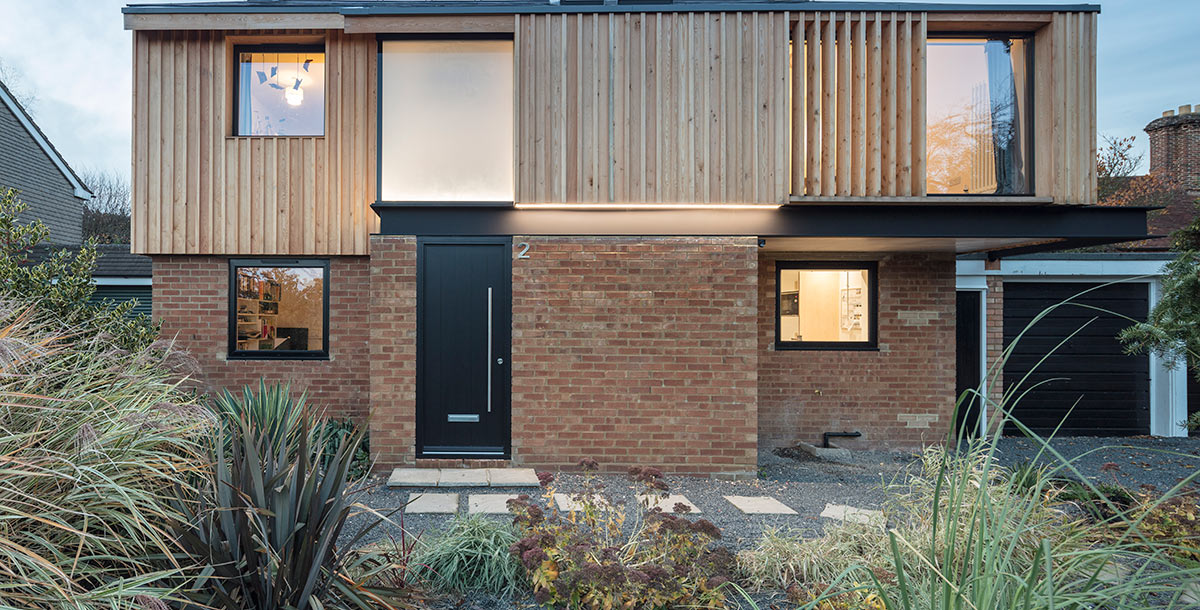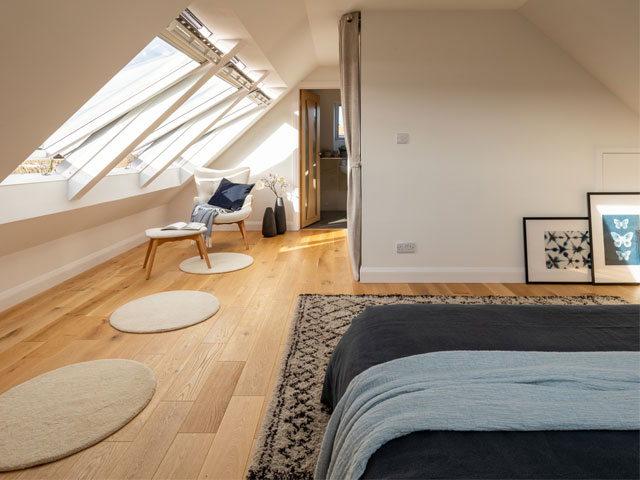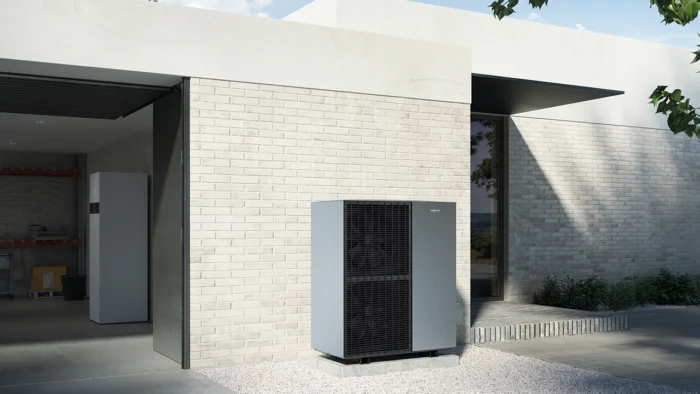Front doors: a buyer’s guide
How to choose the best style, material and size for your home and meet planning regulations
A good quality front door should keep your home safe and secure and prevent drafts. It can also make or break the kerb appeal of your property. This front door guide will help you select the best style, material and size for your home, as well as offering advice on planning regulations.
Which style should I choose?
In general, it is a good idea to stick with a front door design that suits the style of your home. Victorian houses often have imposing entrances including a panelled door in a dark colour with gothic details. Edwardian front doors are lighter in style and paler in colour with decorative glazing. For contemporary homes, an oversized door with glazing to the sides and above makes an entrance stand out and creates a light-filled interior.
‘Hinged, pivot and double doors are the main style options,’ says Elizabeth Assaf, co-founder of Urban Front. ‘Double doors often lead to one panel being unused, meaning that the actual walk-through is small. I recommend having one big front door as it enables a wider walk-through and still looks impressive.’
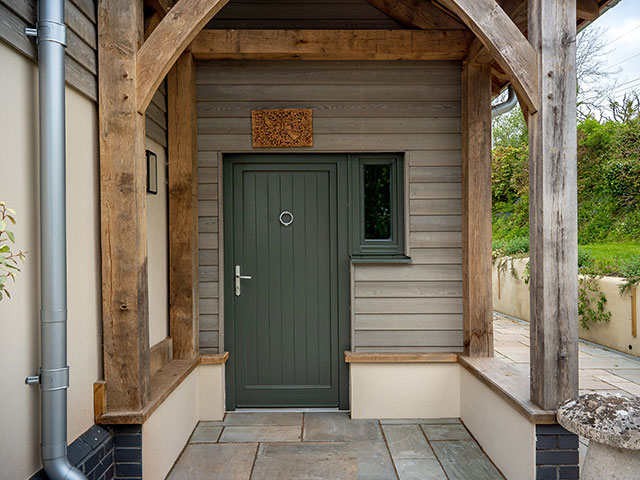
Triple glazed timber entrance door from Green Building Store
Consider the front door material
UPVC Designs come in an array of colours and finishes, with off-the-shelf models in standard dimensions. ‘Fitting is relatively simple as the doors are lightweight and small,’ says Leanne Chandler, director of CMS Garage & Entrance Doors. On the downside, uPVC products are more prone to movement due to temperature change.
A high-quality composite design will be more expensive than uPVC. ‘Composites comprise several materials. There is an insulated or softwood core and a plastic panel on the external and internal sides,’ says Matt Higgs, director and co-owner of Klöeber.
Strong and durable timber is great for oversized designs and has excellent thermal performance. But it’s likely to require maintenance and needs treating or repainting from time to time. Softwood designs are more prone to warping if not properly maintained.
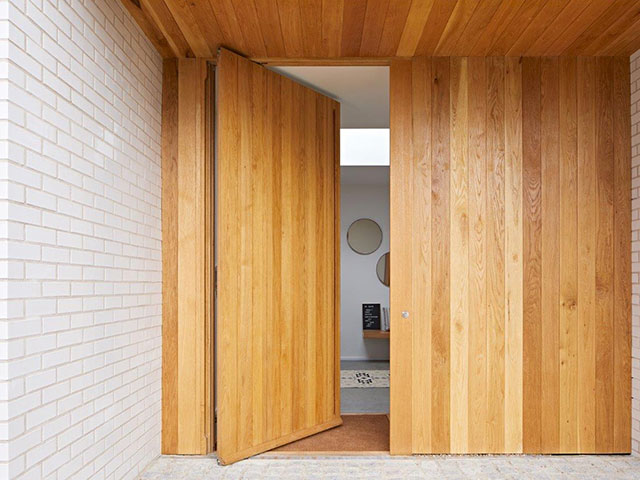
Porto e80 pivot door set in European oak with adjacent cladding, Urban Front
Metal options
Aluminium can be powder-coated in any colour and can have impressive thermal performance due to insulating material in the door’s core. Because of its strength, it’s possible to get designs that are taller and wider than standard.
‘There are several finishing options, including wood effect, rust, concrete, porcelain and liquid metal,’ says Leanne. ‘But installation can be trickier due to the size and weight, as most are triple glazed and laminated.’
Steel is a robust option but unsuitable for coastal properties. ‘If your house is near the sea, a steel core should have an aluminium outer or a marine-grade premium protective coating,’ advises Rebecca Clayton, director at IQ Glass.
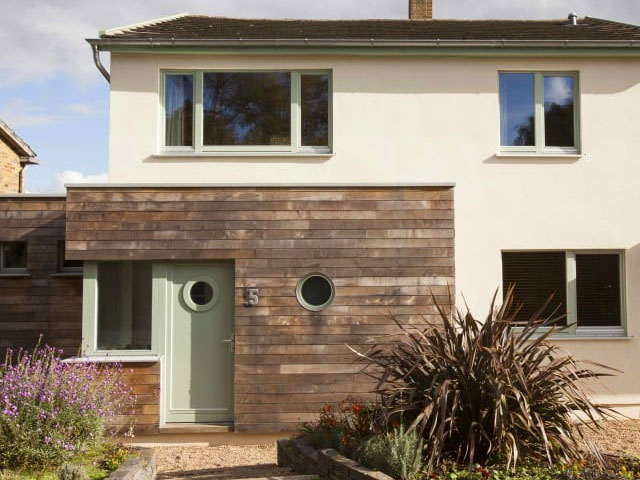
Photo: Green Building Store
Check the lifespan
Whichever material you choose, check how long it’s likely to last with the supplier. ‘If the door is good quality and regularly maintained, it should last a lifetime,’ says Matt Higgs. Timber designs should last at least 60 years, uPVC between 20 and 25 years, and aluminium somewhere between the two.
Thermal performance is important too. Replacement models should have a U-value of 1.8 W/m2K. This is a measurement of heat loss, with lower numbers indicating superior performance. For new-builds, the U-value for a new front door should be 2.0 W/m2K or less.
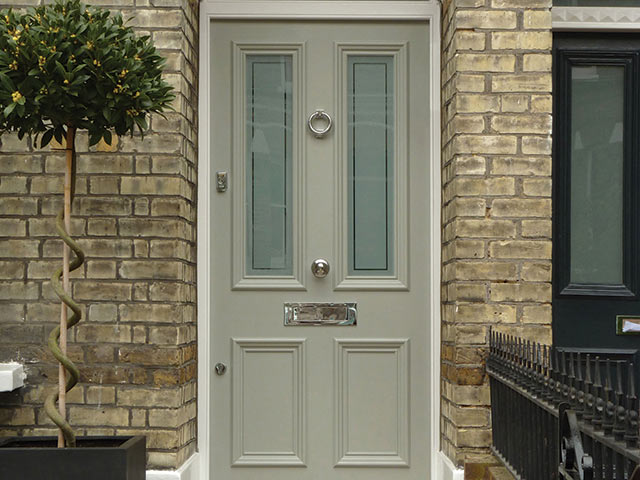
Traditional Victorian-style front door made from Accoya, a high-performance timber. Bespoke design by London Door Company
Where to buy a front door?
The quickest and cheapest way to find a front door is to go to a DIY store. It is likely you’ll need to buy handles, locks and hinges before fitting the door yourself or hiring a joiner, and the installer won’t be responsible for the quality of the product.
Some specialist suppliers offer a measure, supply and fit service. Suppliers that don’t provide installation usually have a list of approved installers/joiners. Where possible, visit showrooms to get a feel for the quality of the products. When you place an order, ensure all the fittings needed are included and that you are familiar with the terms of the warranty.
If you’re building your home from scratch, it is possible that the opening the door fits into will move over time as the house settles. The door may also need adjusting when the weather changes through the seasons.
‘In general, movement issues are an easy fix if the hinges are adjustable,’ says Matt. ‘If any parts break or fail, the supplier should replace them if it’s within a reasonable timeframe.’ By having the same company measure, supply and install the door you will only have a single point of contact to liaise with should there be any problems following fitting.
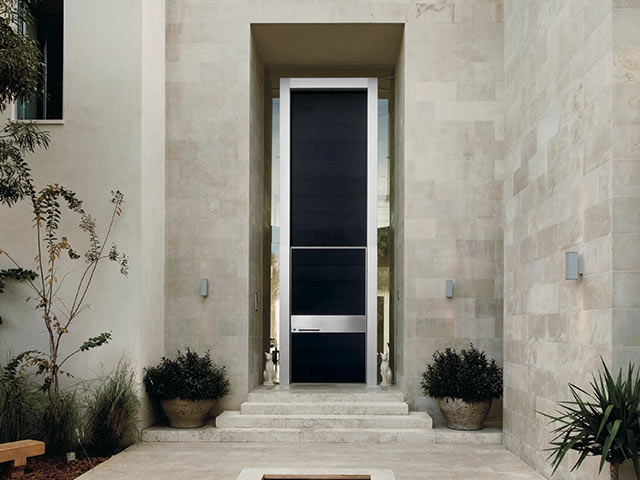
Apertio Solid entrance door with reinforced steel core and a thermally broken aluminium frame. Photo: IQ Glass
Planning and building regulations for front doors
- Minor changes to a front door, such as fitting a new frame or handle, typically don’t require planning consent. ‘Permission isn’t needed to change a door, providing the new one is similar to the existing style,’ says Elizabeth Assaf, co-founder of Urban Front. But it is needed if you plan to move a door’s position or build a new entrance.
- If you live in a conservation area or your house is listed, you will need permission to replace the front door or change its colour. If you’re self-building, the entrance should comply with Building Regulations Part M. ‘There must be at least one level threshold, which means the ground outside and the floor inside need to be almost level with the top of your door threshold,’ says Matt Higgs, director and co-owner of Klöeber.
- Doors in existing buildings don’t have to comply to the same standards. ‘The latest Building Regulations emphasise security for new-build properties in Part Q,’ says Matt. Though the same standards don’t apply to new doors in an existing house, it’s wise to choose a product that’s been tested to withstand manual attack. For peace of mind, look for the Secured by Design certification.

